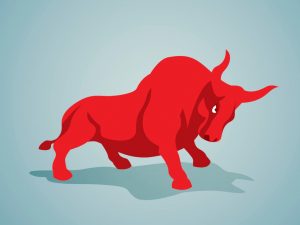Fed Chair Powell’s speech last Friday at the Jackson Hole economic policy symposium is key for investors to gauge short and intermediate-term monetary policy. The bottom line is that easy monetary policy will remain for some time to come.
The large number of hawks on the FOMC were arguing for an immediate taper to Fed bond purchases. But the FOMC is not all on the same page. No matter how forcefully the hawks screech for tapering to begin, it looks like it will take until at least November for doves to be confident enough about the economy to begin reducing asset purchases. We think the most likely outcome is for a taper announcement in November and slower bond purchases in December.
The FOMC won’t hike rates while they are still buying bonds. The market is assuming that rate hikes will follow at a lag once the taper is complete. It all depends on the path of the economy. Powell’s view is nuanced: while he appears to support tapering later this year assuming no major economic slowdown, the “timing and pace of the coming reduction in asset purchases will not be intended to carry a direct signal regarding the timing of interest rate liftoff.” Actual hikes require a “different and more stringent test,” suggesting that rate hikes are not just around the corner Powell’s position is bullish for stock prices.
We know that the longer an investor’s time frame, the greater the likelihood they will make money in stocks. At about a 16 year holding period, the historical probability of making money in stocks (total return) is 100%. What about shorter periods of time – even daily? Going back to 1928, the odds of the S&P 500 index’s price being higher on any given trading day is just 52.43% – just barely higher than a coin flip (source: Bespoke Investment Group). While 2.43% above the 50/50 mark might not seem like much, it adds up when you compound this advantage going back nearly 100 years. (This is the reason why a casino that offers a win rate above 50% would quickly go out of business.)
“MAKE HAY WHILE THE SUN SHINES”: A SUMMARY OF OUR OUTLOOK FOR STOCKS

The vast majority of market participants are making one set of assumptions about the economy – that is, they fear peaking economic momentum. This time around, deceleration in many leading indicators should not be mistaken for late-cycle characteristics. It is true that many measures of economic activity are peaking in terms of momentum and growth rates. That is simply because the rates of growth are historic. The rates of growth usually peak in the 12 to 18 months following a recession. Yet the economic and stock market cycle can go on for years as it did from 2009-2020.
The combination of stunning fiscal and monetary policy support along with a private sector in such great shape makes it easy to believe that this economic cycle has years left in it. Just the restocking cycle alone will last for quarters to come. As a result, it is too early to call a top in S&P 500 earnings. Peak earnings may reach near $300 this cycle, which means the market is selling at 15-16x peak earnings – hardly a crazy number.
Of course there are parts of the market that are egregiously valued (for example, IPOs, SPACs, and Crypto). And price corrections will come and go. You can argue that we are undergoing a correction now: yes, the market averages are at record highs, but the average stock in the S&P 1500 is almost 15% below its 52 week high. It is a tough go for many stocks right now, especially mid and small cap stocks.
This cycle is supported by three factors: first, easy central bank policies (see first bullet point above), second, labor market recovery, and third, a remarkable private economy with very healthy consumer and corporate sectors. In fact, the consumer might be finally achieving liftoff they failed to achieve since the Great Recession.
What is going on in the economy is more substantial than refilling supply chains. We think supply chains need to be rebuilt for a fundamentally higher level of nominal demand. If this is correct, we are heading into a real investment cycle. This is something that will unfold over years, not just a few quarters.
The pandemic fears are the wall of worry that the market is climbing. Our bullish position may be too rosy, and the market is certainly not without risks. But there are always risks. The bond market is giving off a very different signal (given ultra-low rates and little concern towards inflation). If the deceleration in leading indicators goes all the way back to neutral in the next few quarters and leads to a reversal in the higher earnings estimates we are seeing, then the bond market is right and we are too optimistic.
Since we stay fully invested and do not market time, our outlook has no bearing on investment levels. But it has a big impact on the types of stocks we buy. Although we have a bias towards quality growth stocks, we think another “re-opening” stock rally will come soon and therefore are primarily focused on cyclical/value stocks for new purchases.
